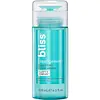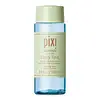What's inside
What's inside
 Key Ingredients
Key Ingredients

 Benefits
Benefits

 Concerns
Concerns

 Ingredients Side-by-side
Ingredients Side-by-side

Water
Skin ConditioningHamamelis Virginiana Water
AstringentButylene Glycol
HumectantSalicylic Acid
MaskingZinc PCA
HumectantCentella Asiatica Leaf Extract
Skin ConditioningNiacinamide
SmoothingSodium Hyaluronate
HumectantRosa Canina Fruit Oil
EmollientSalix Nigra Bark Extract
Skin ProtectingMelaleuca Alternifolia Leaf Oil
AntioxidantLens Esculenta Seed Extract
Skin ProtectingAllantoin
Skin ConditioningGlycerin
HumectantCocamidopropyl Pg-Dimonium Chloride Phosphate
Polyglyceryl-4 Caprate
EmulsifyingPolyglyceryl-6 Caprylate
EmulsifyingCarbomer
Emulsion StabilisingDisodium EDTA
Phenoxyethanol
PreservativeEthylhexylglycerin
Skin ConditioningBenzoic Acid
MaskingChlorphenesin
AntimicrobialCitric Acid
BufferingSodium Hydroxide
BufferingWater, Hamamelis Virginiana Water, Butylene Glycol, Salicylic Acid, Zinc PCA, Centella Asiatica Leaf Extract, Niacinamide, Sodium Hyaluronate, Rosa Canina Fruit Oil, Salix Nigra Bark Extract, Melaleuca Alternifolia Leaf Oil, Lens Esculenta Seed Extract, Allantoin, Glycerin, Cocamidopropyl Pg-Dimonium Chloride Phosphate, Polyglyceryl-4 Caprate, Polyglyceryl-6 Caprylate, Carbomer, Disodium EDTA, Phenoxyethanol, Ethylhexylglycerin, Benzoic Acid, Chlorphenesin, Citric Acid, Sodium Hydroxide
Water
Skin ConditioningAloe Barbadensis Leaf Juice
Skin ConditioningPropanediol
SolventGlycerin
HumectantSodium PCA
HumectantBetaine
HumectantLactobacillus Ferment Lysate Filtrate
Skin ConditioningGlycolic Acid
BufferingSodium Hyaluronate
HumectantSalicylic Acid
MaskingGlycyrrhiza Glabra Root Extract
BleachingSalix Alba Bark Extract
AstringentMagnesium Ascorbyl Phosphate
AntioxidantCentella Asiatica Extract
CleansingSaccharum Officinarum Extract
MoisturisingLeuconostoc/Radish Root Ferment Filtrate
AntimicrobialPopulus Tremuloides Bark Extract
AntiseborrhoeicLactic Acid
BufferingSodium Citrate
BufferingSodium Hydroxide
BufferingEthylhexylglycerin
Skin ConditioningCitric Acid
BufferingPotassium Sorbate
PreservativeSodium Benzoate
MaskingPhenoxyethanol
PreservativeWater, Aloe Barbadensis Leaf Juice, Propanediol, Glycerin, Sodium PCA, Betaine, Lactobacillus Ferment Lysate Filtrate, Glycolic Acid, Sodium Hyaluronate, Salicylic Acid, Glycyrrhiza Glabra Root Extract, Salix Alba Bark Extract, Magnesium Ascorbyl Phosphate, Centella Asiatica Extract, Saccharum Officinarum Extract, Leuconostoc/Radish Root Ferment Filtrate, Populus Tremuloides Bark Extract, Lactic Acid, Sodium Citrate, Sodium Hydroxide, Ethylhexylglycerin, Citric Acid, Potassium Sorbate, Sodium Benzoate, Phenoxyethanol
 Reviews
Reviews

Ingredients Explained
These ingredients are found in both products.
Ingredients higher up in an ingredient list are typically present in a larger amount.
Citric Acid is an alpha hydroxy acid (AHA) naturally found in citrus fruits like oranges, lemons, and limes.
Like other AHAs, citric acid can exfoliate skin by breaking down the bonds that hold dead skin cells together. This helps reveal smoother and brighter skin underneath.
However, this exfoliating effect only happens at high concentrations (20%) which can be hard to find in cosmetic products.
Due to this, citric acid is usually included in small amounts as a pH adjuster. This helps keep products slightly more acidic and compatible with skin's natural pH.
In skincare formulas, citric acid can:
While it can provide some skin benefits, research shows lactic acid and glycolic acid are generally more effective and less irritating exfoliants.
Most citric acid used in skincare today is made by fermenting sugars (usually from molasses). This synthetic version is identical to the natural citrus form but easier to stabilize and use in formulations.
Read more about some other popular AHA's here:
Learn more about Citric AcidEthylhexylglycerin (we can't pronounce this either) is commonly used as a preservative and skin softener. It is derived from glyceryl.
You might see Ethylhexylglycerin often paired with other preservatives such as phenoxyethanol. Ethylhexylglycerin has been found to increase the effectiveness of these other preservatives.
Glycerin is already naturally found in your skin. It helps moisturize and protect your skin.
A study from 2016 found glycerin to be more effective as a humectant than AHAs and hyaluronic acid.
As a humectant, it helps the skin stay hydrated by pulling moisture to your skin. The low molecular weight of glycerin allows it to pull moisture into the deeper layers of your skin.
Hydrated skin improves your skin barrier; Your skin barrier helps protect against irritants and bacteria.
Glycerin has also been found to have antimicrobial and antiviral properties. Due to these properties, glycerin is often used in wound and burn treatments.
In cosmetics, glycerin is usually derived from plants such as soybean or palm. However, it can also be sourced from animals, such as tallow or animal fat.
This ingredient is organic, colorless, odorless, and non-toxic.
Glycerin is the name for this ingredient in American English. British English uses Glycerol/Glycerine.
Learn more about GlycerinPhenoxyethanol is a preservative that has germicide, antimicrobial, and aromatic properties. Studies show that phenoxyethanol can prevent microbial growth. By itself, it has a scent that is similar to that of a rose.
It's often used in formulations along with Caprylyl Glycol to preserve the shelf life of products.
Salicylic Acid (also known as beta hydroxy acid or BHA) is a well-known ingredient for treating skin that struggles with acne and clogged pores. It exfoliates both the skin's surface and deep within the pores to help clear out buildup, control oil, and reduce inflammation.
Unlike AHAs (alpha hydroxy acids), salicylic acid is oil-soluble. This allows it to penetrate into pores which makes it especially effective for treating blackheads and preventing future breakouts.
Salicylic acid is also known for its soothing properties. It has a similar structure to aspirin and can calm inflamed or irritated skin, making it a good option for acne-prone skin that is also sensitive.
Concentrations of 0.5-2% are recognized by the U.S. FDA as an over-the-counter topical acne product.
It can cause irritation and/or dryness if one's skin already has a compromised moisture barrier, so it's best to focus on repairing that before introducing this ingredient into your routine.
While salicylic acid does not increase sun sensitivity, it’s still important to wear sunscreen daily to protect your skin.
If you are looking for the ingredient called BHA or Butylated Hydroxyanisole, click here.
Learn more about Salicylic AcidSodium Hyaluronate is hyaluronic acid's salt form. It is commonly derived from the sodium salt of hyaluronic acid.
Like hyaluronic acid, it is great at holding water and acts as a humectant. This makes it a great skin hydrating ingredient.
Sodium Hyaluronate is naturally occurring in our bodies and is mostly found in eye fluid and joints.
These are some other common types of Hyaluronic Acid:
Learn more about Sodium HyaluronateSodium Hydroxide is also known as lye or caustic soda. It is used to adjust the pH of products; many ingredients require a specific pH to be effective.
In small amounts, sodium hydroxide is considered safe to use. However, large amounts may cause chemical burns due to its high alkaline.
Your skin has a natural pH and acid mantle. This acid mantle helps prevent harmful bacteria from breaking through. The acid mantle also helps keep your skin hydrated.
"Alkaline" refers to a high pH level. A low pH level would be considered acidic.
Learn more about Sodium HydroxideWater. It's the most common cosmetic ingredient of all. You'll usually see it at the top of ingredient lists, meaning that it makes up the largest part of the product.
So why is it so popular? Water most often acts as a solvent - this means that it helps dissolve other ingredients into the formulation.
You'll also recognize water as that liquid we all need to stay alive. If you see this, drink a glass of water. Stay hydrated!
Learn more about Water